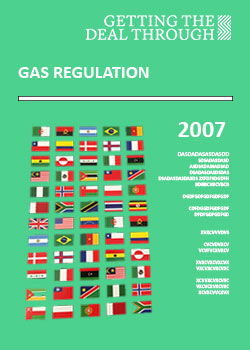Arbitrating the future: Rethinking global dispute resolution in an age of strategic disruption –perspective 2035

Introduction
By 2035, international arbitration will be redefined not only by legal innovation but by its strategic relevance in a world marked by geopolitical fragmentation, technological acceleration, and ecological transition. Arbitration is no longer a peripheral mechanism for commercial disputes—it is becoming a central arena where states, corporations, and transnational actors negotiate power, legitimacy, and risk. As global governance becomes more contested and multipolar, arbitration must evolve to address complex disputes that reflect the strategic priorities of a rapidly transforming world.
Futures studies are not solely about forecasting what lies ahead—they critically examine the present to understand how current values, systems, and decisions shape possible futures. By analyzing today’s assumptions and power structures, the field reveals how the future is already being constructed in the now.
Its tools—like scenario planning and backcasting—depend on present trends and disruptions to imagine alternatives. This makes futures studies a strategic lens for rethinking today’s challenges, enabling more inclusive and anticipatory decisions grounded in current realities.
The evolution of international arbitration cannot be understood solely through the lens of legal development. While it shares structural similarities with other juridical institutions—such as codification, procedural refinement, and the emergence of specialized bodies—its trajectory has been uniquely shaped by the demands of cross-border commerce and the need for neutral dispute resolution mechanisms. Arbitration emerged as a pragmatic response to the limitations of national courts in handling transnational conflicts, especially in contexts where sovereignty, jurisdiction, and enforceability posed significant challenges.
Political and economic conditions have played a decisive role in shaping arbitration’s institutional architecture. From the rise of bilateral investment treaties (BITs) to the proliferation of free trade agreements, states have increasingly embraced arbitration as a tool for attracting foreign investment and mitigating geopolitical risk. The post–Cold War expansion of global markets, coupled with the liberalization of trade regimes, created fertile ground for arbitration to flourish. Institutions like ICSID and UNCITRAL gained prominence not just because of their legal sophistication, but because they offered predictability and legitimacy in politically sensitive environments.
Equally important has been the evolution of business practices and corporate strategies. As multinational enterprises expanded their operations across jurisdictions, the need for efficient, confidential, and enforceable dispute resolution mechanisms became paramount. Arbitration adapted to these needs by offering procedural flexibility, party autonomy, and enforceability under instruments like the New York Convention. Today, arbitration reflects a dynamic interplay between legal norms, commercial pragmatism, and geopolitical considerations—making it not just a legal institution, but a strategic instrument of global governance
Strategic pressures and emerging dispute frontiers
The idea of a “crisis” in arbitration often stems from concerns about legitimacy, transparency, cost, and consistency—especially in investor-state dispute settlement (ISDS). Critics argue that arbitration has become overly legalistic, expensive, and disconnected from the needs of affected communities or public interests. Some point to backlash from states revising or withdrawing from treaties, or to procedural fragmentation and unpredictability in arbitral outcomes.
Yet these very tensions may signal a renaissance rather than a decline. Arbitration is evolving—embracing reforms like greater transparency, diversity in arbitrator appointments, and procedural innovations. Crises, as some scholars argue, can catalyze transformation: pushing institutions to adapt, refine, and re-legitimize their roles. The rise of specialized tribunals, new codes of conduct, and broader stakeholder engagement suggests that arbitration is not collapsing but recalibrating—toward a more responsive and resilient future.
Multipolarity and the Rise of Strategic Arbitration
The erosion of unipolar legal consensus is giving way to a multipolar arbitration landscape. Regional arbitral centers are gaining prominence, not merely as alternatives to traditional institutions, but as strategic platforms aligned with national and regional interests. This shift reflects a broader recalibration of legal authority, where arbitration forums are selected not only for neutrality but for their capacity to reflect geopolitical alignments and regulatory preferences.
The international dispute resolution landscape has undergone a remarkable expansion, marked by the proliferation of specialized centers and forums across jurisdictions. Institutions such as the Singapore International Arbitration Centre (SIAC) https://siac.org.sg/ , the Mumbai Centre for International Arbitration (MCIA) https://mcia.org.in/ , and the International Arbitration and Mediation Centre in Hyderabad https://iamch.org.in/ have rapidly gained prominence, handling billions in cross-border disputes and reflecting a growing demand for regionally grounded, globally credible mechanisms. These centers offer not only arbitration but also mediation and hybrid models, responding to the need for flexible, efficient, and culturally attuned processes.
Simultaneously, the rise of international commercial courts (ICCs) in jurisdictions like Dubai, Abu Dhabi, Singapore, and post-Brexit Europe signals a strategic shift. These courts blend common law procedures with multilingual capabilities and international judicial expertise, positioning themselves as competitive alternatives to traditional arbitration. Their emergence reflects broader geopolitical and economic motivations—states seeking to project soft power, attract foreign investment, and establish themselves as legal hubs in the global economy.
This diversification of forums is not merely institutional—it’s conceptual. The growth of digital ADR platforms, AI-assisted resolution tools, and hybrid proceedings has redefined access and participation in global dispute resolution. As legal systems adapt to technological change and transnational complexity, the expansion of centers and forums represents not fragmentation but innovation. It signals a renaissance in dispute resolution—one that is more plural, responsive, and strategically aligned with the evolving contours of international commerce and governance.
In this context, arbitration becomes a tool of strategic positioning. States and corporations increasingly engage in forum selection and procedural design as part of broader geopolitical calculations. The rise of regional treaties and investment frameworks—often with embedded dispute resolution mechanisms—further reinforces the role of arbitration as a site of legal pluralism and strategic contestation.
Climate, Energy, and Resource Disputes
The global energy transition is generating a new wave of disputes centered on climate regulation, environmental obligations, and access to critical minerals. Arbitration will play a pivotal role in adjudicating conflicts over green infrastructure, carbon markets, and the reconfiguration of energy systems. These disputes are not merely commercial—they involve questions of sovereignty, ecological justice, and strategic resource control.
As states revise regulatory frameworks to meet climate targets, investors may challenge measures that affect profitability or asset valuation. Arbitration will need to reconcile investor protections with evolving environmental standards, balancing treaty obligations with planetary imperatives. The strategic importance of minerals such as lithium, cobalt, and rare earths will further intensify disputes over extraction rights, licensing regimes, and supply chain disruptions.
The protection of the environment and the global energy transition are increasingly intertwined as emerging matters of arbitrability, reshaping the contours of both commercial and investment arbitration. As states adopt climate policies—such as phasing out fossil fuels, regulating emissions, or incentivizing renewable energy—investors have begun challenging these measures under bilateral and multilateral treaties. Disputes over carbon pricing, feed-in tariffs, and retroactive changes to green energy incentives have already surfaced, revealing how environmental regulation and energy transition policies directly affect contractual and treaty-based expectations.
This convergence has also led to the rise of Environmental, Social, and Governance (ESG) clauses in contracts, which embed sustainability obligations into commercial relationships. These clauses are now being tested in arbitral forums, raising procedural and substantive questions about enforceability, jurisdiction, and public interest considerations. Arbitration is thus evolving to accommodate complex claims involving climate risk, regulatory change, and environmental harm—requiring tribunals to balance investor protections with sovereign rights to regulate for sustainability. Far from being peripheral, environmental and energy transition issues are becoming central to the future of arbitrability itself.
Technology, Dual-Use Innovation, and Strategic Sensitivities
Technological innovation—particularly in artificial intelligence, biotechnology, and dual-use systems—is reshaping the contours of transnational dispute resolution. Contracts involving sensitive technologies increasingly intersect with national security, data governance, and ethical regulation. Arbitration must adapt to handle disputes that involve proprietary algorithms, synthetic biology, and autonomous systems, often in contexts where confidentiality and strategic control are paramount.
These disputes require specialized procedural safeguards, technical expertise, and normative sensitivity. Arbitration will need to develop protocols for managing classified information, protecting intellectual property, and adjudicating claims that implicate both commercial interests and strategic imperatives. The convergence of technological and geopolitical risk will make arbitration a critical forum for navigating the boundaries of innovation and regulation.
By 2035, artificial intelligence will have become a structural component of international arbitration. AI systems will assist in case triage, jurisdictional analysis, and outcome prediction based on precedent and tribunal profiles. This integration will accelerate proceedings, reduce costs, and enhance argumentative coherence. However, it will also raise ethical challenges related to transparency, party autonomy, and algorithmic oversight. Arbitral institutions will have developed normative frameworks to ensure that technological intervention respects fundamental principles of due process.
Decentralized technologies such as blockchain will have transformed evidentiary management and award enforcement. Smart contracts will include self-executing arbitration clauses that trigger automated procedures upon breach. Digital evidence will be stored in verifiable custody chains, ensuring integrity and traceability. Arbitral awards will be encoded for instant recognition under international conventions, facilitating enforcement without jurisdictional friction. This infrastructure will consolidate arbitration as a reliable mechanism in environments marked by regulatory volatility.
Quantum computing and multilingual neural translation systems will have expanded the reach and sophistication of arbitration. Quantum algorithms will simulate complex normative conflicts and anticipate regulatory scenarios in investment, technology, and environmental disputes. Meanwhile, high-precision automatic translation will ensure full participation of linguistically diverse parties without sacrificing legal nuance. These technologies will redefine the role of arbitrators, who will not only interpret norms but mediate between divergent regulatory paradigms. Arbitration will become a strategic instrument for global cooperation and legal governance in times of disruption.
Institutional innovation and normative recalibration
Reconfiguring Legitimacy and Participation
The legitimacy of arbitration in the 2030 horizon will depend on its ability to incorporate broader stakeholder perspectives and respond to public interest concerns. Disputes involving environmental harm, indigenous rights, and social impact will require mechanisms that go beyond traditional party autonomy. Institutions must expand procedural inclusivity through tools such as third-party interventions, public hearings, and community representation.
This evolution reflects a strategic shift from arbitration as a private remedy to arbitration as a quasi-public forum. As disputes increasingly touch on global commons and collective goods, the legitimacy of arbitral outcomes will hinge on transparency, accountability, and normative coherence. Institutions must design procedures that accommodate plural interests while preserving procedural integrity and enforceability.
AI-Augmented Arbitration and Strategic Intelligence
Artificial intelligence will transform the practice of arbitration, not only through automation but through strategic intelligence. Predictive analytics, natural language processing, and decision-support systems will enhance case management, precedent analysis, and risk modeling. These tools will allow parties to simulate outcomes, optimize strategies, and anticipate arbitrator behavior.
However, the integration of AI raises strategic concerns about bias, opacity, and control. Institutions must establish governance frameworks that ensure algorithmic accountability, human oversight, and ethical compliance. Arbitration will become a hybrid space where human judgment and machine intelligence co-produce legal outcomes, requiring new standards of transparency and procedural fairness.
Treaty Reform and Sovereignty Reassertion
States are reasserting sovereignty through treaty reform, embedding clauses that protect regulatory autonomy in areas such as climate policy, public health, and financial stability. These reforms reflect a strategic recalibration of investment law, where the balance between investor protection and state discretion is being renegotiated.
Arbitrators will face complex interpretive challenges as they apply evolving treaty language to dynamic policy contexts. Disputes will increasingly involve questions of proportionality, necessity, and legitimacy, requiring arbitrators to engage with broader strategic rationales. The proliferation of overlapping treaties and regional frameworks will further complicate jurisdictional analysis and normative coherence.
Shaping the arbitrator of the future
Strategic Formation for a Complex Legal Landscape
The arbitrator of 2035 must be more than a legal technician—they must be a strategic interpreter of global complexity. As disputes increasingly involve overlapping jurisdictions, sensitive technologies, and contested norms, arbitrators will require a multidisciplinary formation that blends legal rigor with geopolitical awareness, technological literacy, and ethical discernment.
Gender has emerged as a pivotal issue in arbitration, not only as a matter of representation but as a structural concern shaping legitimacy, fairness, and institutional credibility. In 2023, leading arbitral institutions reported modest but meaningful increases in the appointment of women arbitrators—such as the ICC’s 29.7% rate of female confirmations and appointments. Yet disparities persist, especially when parties or co-arbitrators control nominations, where women are still selected significantly less often2. This imbalance has prompted initiatives like the Equal Representation in Arbitration Pledge and cross-institutional task forces to promote more inclusive appointment practices.
Beyond representation, gender is also influencing procedural norms and substantive expectations. Diverse tribunals are shown to enrich deliberation and enhance stakeholder trust, especially in disputes involving human rights, ESG obligations, or community impacts. Moreover, the arbitration community is increasingly recognizing that gender diversity cannot be reduced to binary metrics alone—it intersects with broader questions of identity, access, and equity. As arbitration evolves, gender is no longer a peripheral concern but a lens through which legitimacy, responsiveness, and global justice are being redefined.
Key dimensions of future arbitrator formation include
Geopolitical and Regulatory Fluency: Arbitrators must understand the strategic interests of states and corporations, the dynamics of regional legal systems, and the implications of treaty reform. Training should include modules on global governance, sovereignty frameworks, and the political economy of dispute resolution.
Technological Competence and Data Governance: With AI, biotech, and digital infrastructure at the heart of future disputes, arbitrators must be conversant in technical concepts such as algorithmic bias, cybersecurity, and intellectual property in emerging domains. This requires collaboration with engineers, data scientists, and ethicists in the design of training programs.
Environmental and Social Impact Analysis: As climate-related and ESG disputes proliferate, arbitrators must be equipped to evaluate environmental assessments, community impact reports, and sustainability metrics. This calls for integration of environmental law, social science, and stakeholder engagement methodologies into arbitrator education.
Procedural Innovation and Adaptive Design: The arbitrator of the future must be capable of tailoring procedures to complex, multi-party, and multi-norm disputes. This includes familiarity with hybrid mechanisms, digital hearings, and participatory tools such as amicus curiae and public consultations.
Ethical, Gender and Normative Reflexivity: Beyond neutrality, arbitrators must cultivate ethical reflexivity—an awareness of how legal decisions shape public goods, institutional legitimacy, and global norms. This includes recognizing how gender dynamics influence access to justice, procedural fairness, and the perception of arbitral authority. Training should incorporate case studies on gender bias, representational disparities, and the normative implications of inclusive adjudication in contested governance spaces.
Strategic Communication and Institutional Leadership: Arbitrators will increasingly serve as institutional actors, shaping the evolution of arbitral norms and practices. Gender-inclusive leadership is essential to this transformation. Arbitrators must be equipped to engage in strategic communication that reflects diverse stakeholder perspectives, promote equitable representation in appointments, and contribute to institutional reforms that embed gender parity and intersectional awareness into the arbitral ecosystem.
To achieve this, arbitral institutions, universities, and professional networks must collaborate in designing advanced curricula, simulation-based learning environments, and interdisciplinary certification programs. The formation of arbitrators must evolve from static legal instruction to dynamic strategic education, preparing them to navigate the volatile, plural, and high-stakes disputes of the coming decade.
Conclusion: Towards strategic arbitration in a complex world
By 2035, international arbitration will not only serve as a strategic instrument of global governance but also reflect the evolving demands of inclusivity, technological transformation, and regional pluralism. Gender diversity will be central to its legitimacy, moving beyond symbolic representation toward structural equity in appointments, leadership, and procedural design. Initiatives like the Equal Representation in Arbitration Pledge have laid groundwork, but deeper reforms are needed to address persistent disparities in party-nominated arbitrators and to ensure intersectional inclusion across gender, ethnicity, and professional background. A truly representative arbitral ecosystem will enhance trust, enrich deliberation, and align with broader global justice imperatives.
Technological transformation will redefine both the substance and procedure of arbitration. AI-assisted case management, digital evidence protocols, and virtual hearings will become standard, demanding new competencies in data analytics and ethics, and algorithmic accountability. Arbitration will also increasingly engage with disputes arising from emerging technologies—such as blockchain, quantum computing, and platform governance—requiring tribunals to interpret novel legal questions with interdisciplinary insight. Institutions must invest in tech-literate infrastructure and adaptive procedural rules to remain credible in this rapidly shifting terrain.

Ministry of Environment creates environmental mining seal

International Joint Ventures (2013)



